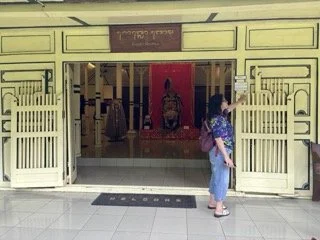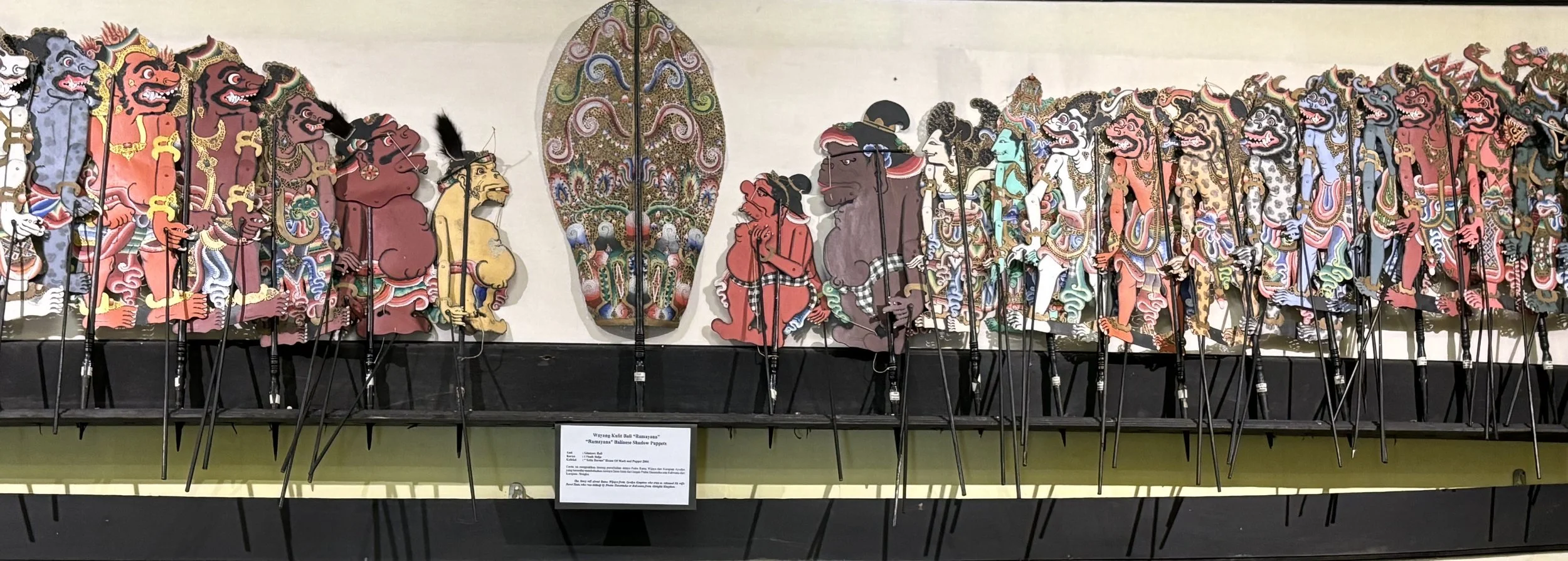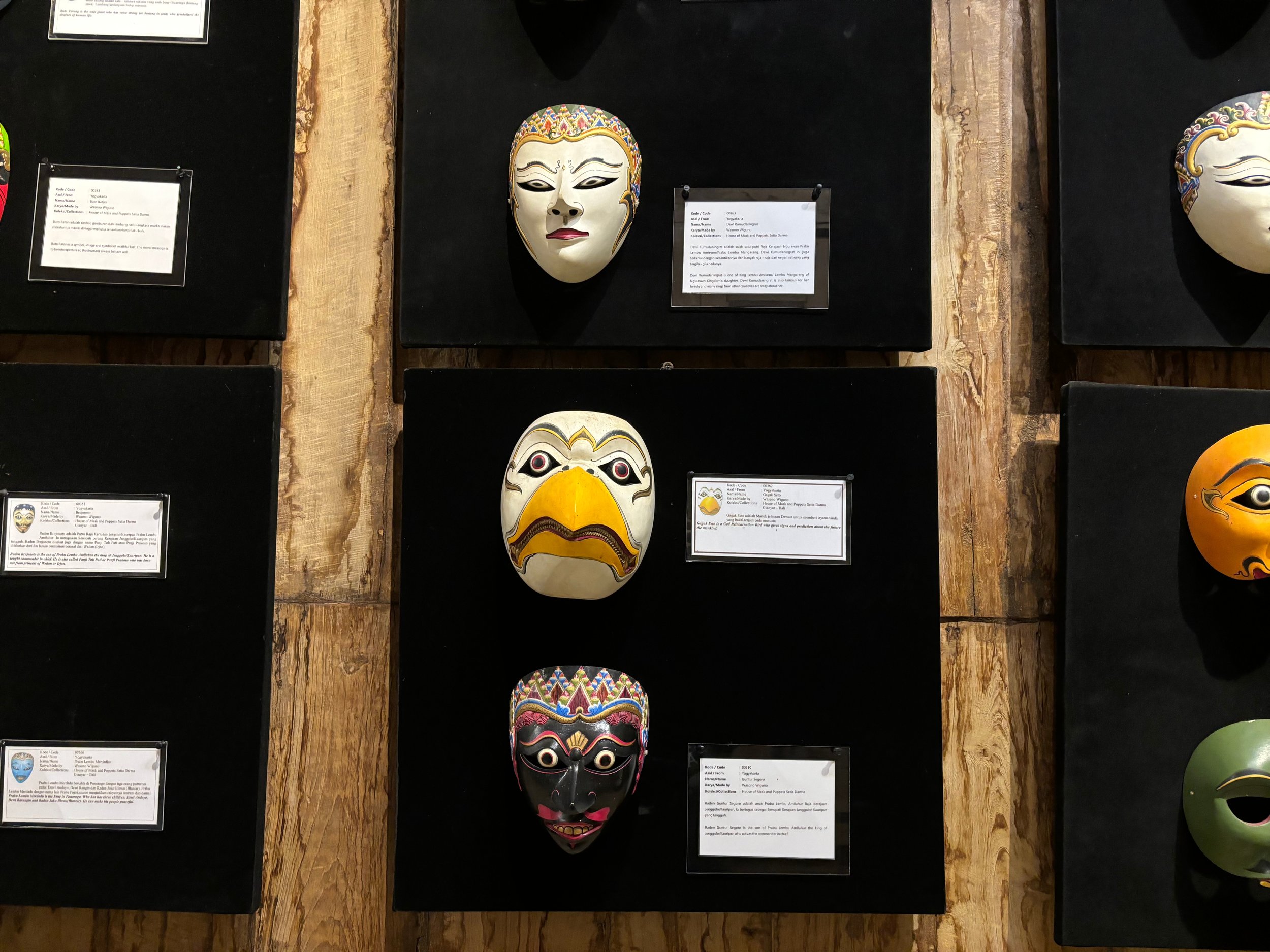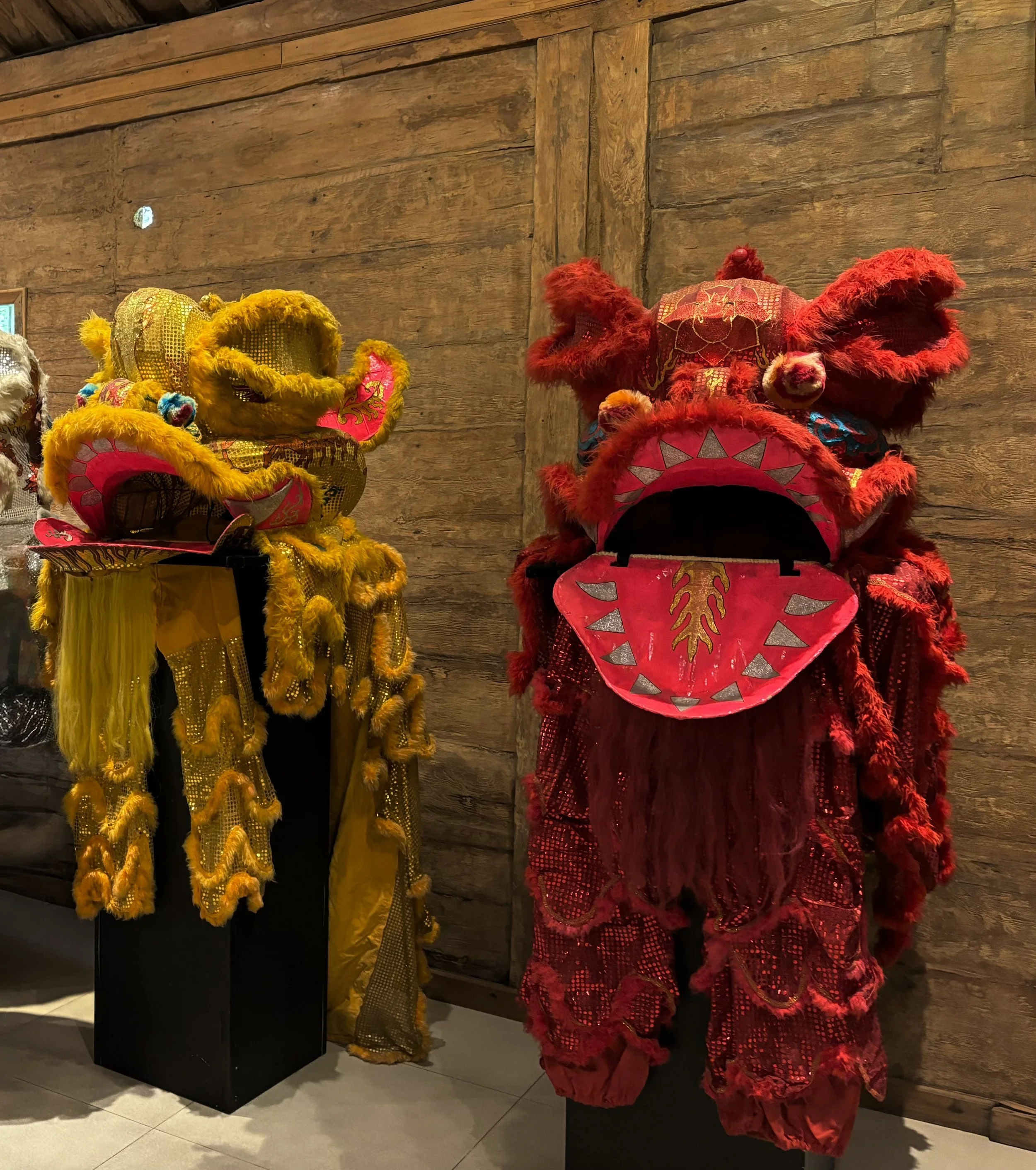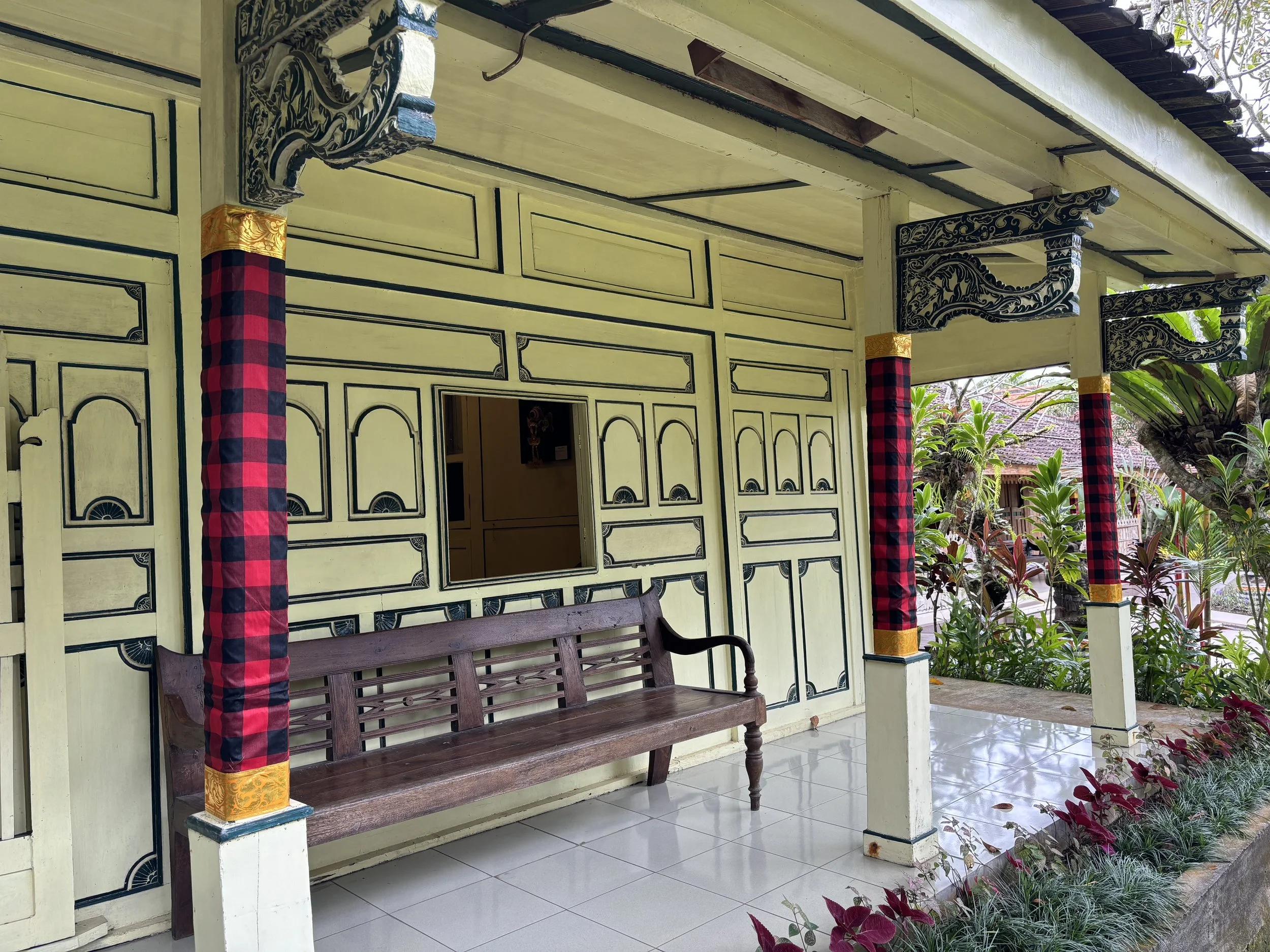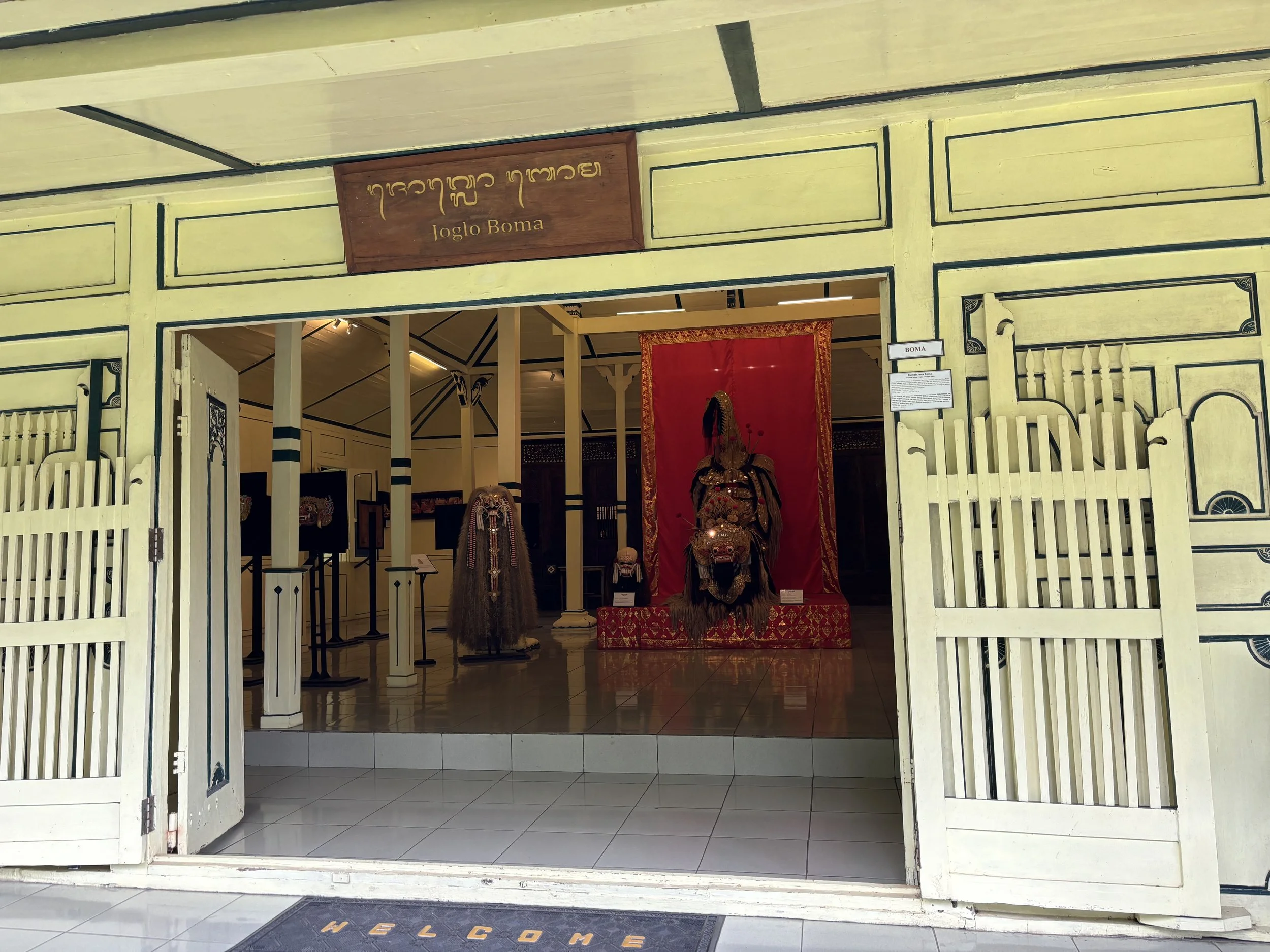Whispering Faces at Bali Mask and Puppets Museum in Ubud, Bali
By 8 a.m., Bali had already staged its own light show. The sunlight was so golden it made the scraggliest rooster look like he had a talent agent. We wandered off without much of a plan and landed at the Setia Darma House of Masks and Puppets, which turned out to be less a quaint little museum and more a surprise cultural wonderland.
The place was a whole compound of Javanese Joglo houses, each one packed with faces. Masks grinned, puppets posed, and expressions ranged from noble warrior to man who just stepped on a Lego. Even the gardens got in on the act. Statues stood across wide lawns, tropical plants strutted like they owned the place, and rice fields waved from the edges as if they were part of the performance.
It felt less like a museum visit and more like stumbling into a village where art had been given free rein to show off. And it nailed the performance.
Bali Mask and Puppets Museum History
Built in 2006, the Bali Mask and Puppets Museum was founded by Hadi Sunyoto, a true enthusiast who treated every carved mask with care and appreciation. “He must really love masks,” my husband whispered as we stepped into the first Joglo, surrounded by faces staring back at us. “You think he polishes them at night?” I shot him a look that said stop, because now that image is stuck in my head forever.
Pictured here was Barong Landung are sacred figures in Balinese culture, representing the legendary King Jaya Pangus and his Chinese princess wife, Kang Cing Wie.
Beyond Bali: Masks Across Cultures
Stepping into Rumah Topeng dan Wayang Setia Darma felt less like a museum and more like entering a vast masquerade. Each Joglo, a traditional Javanese wooden house, was clearly labeled, so wandering through the halls felt like traveling across cultures. One moment we were in a Javanese temple, the next we were face to face with an African spirit mask, and then a delicate Japanese figure seemed to look back at us knowingly. The museum was uncrowded and quiet, offering a rare sense of calm. Admission was free, which made it one of those Ubud hidden gems.


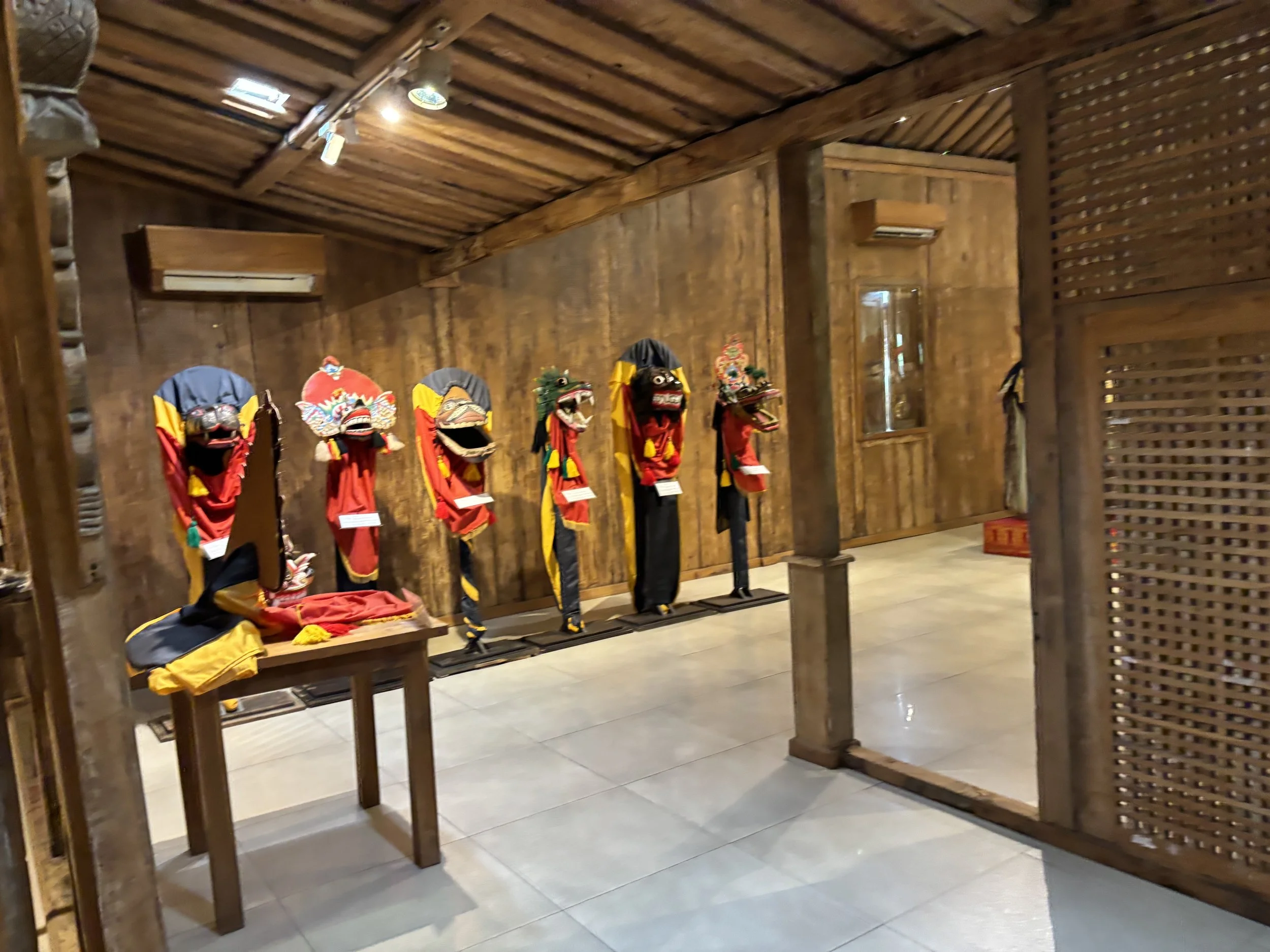



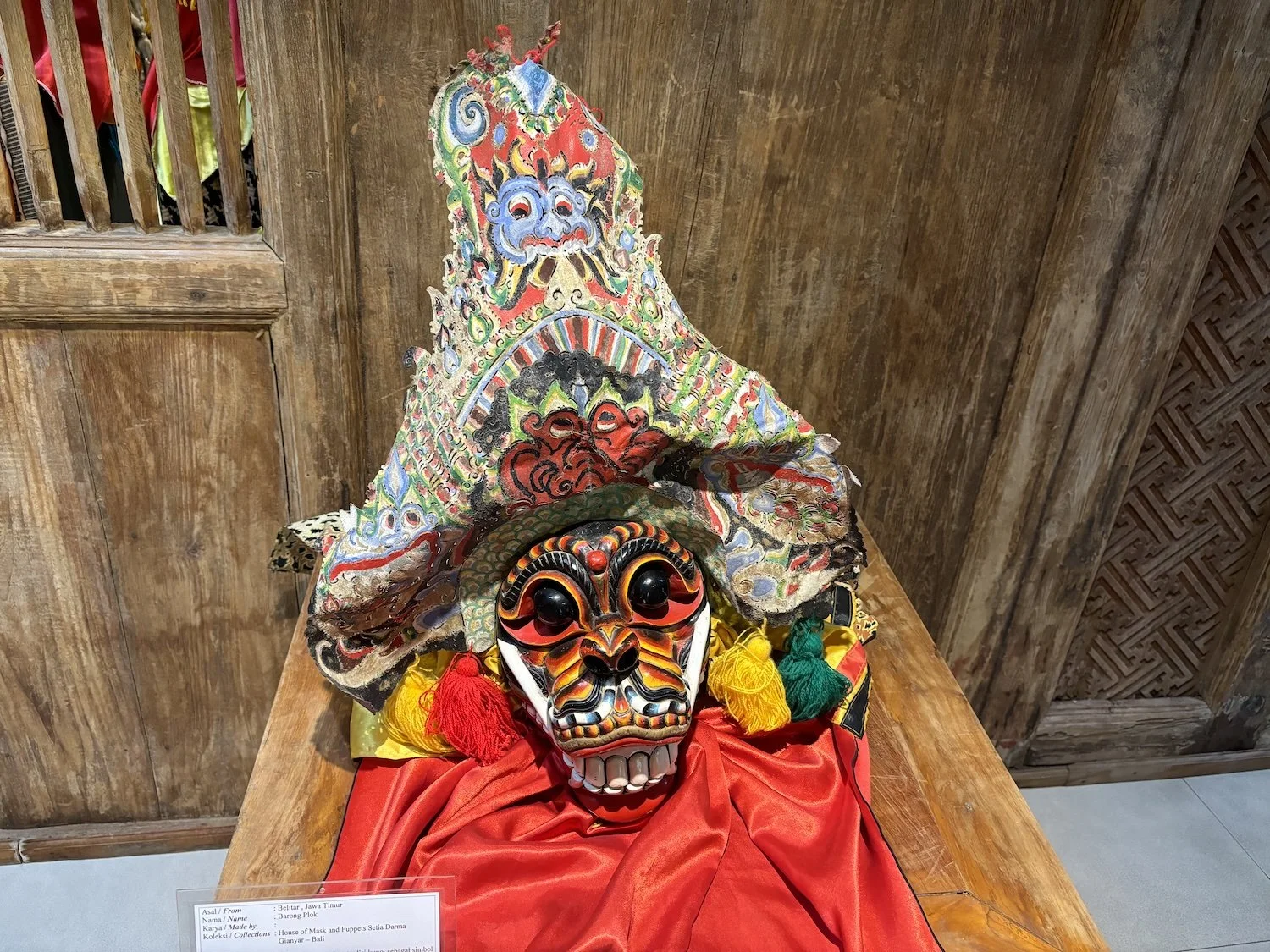
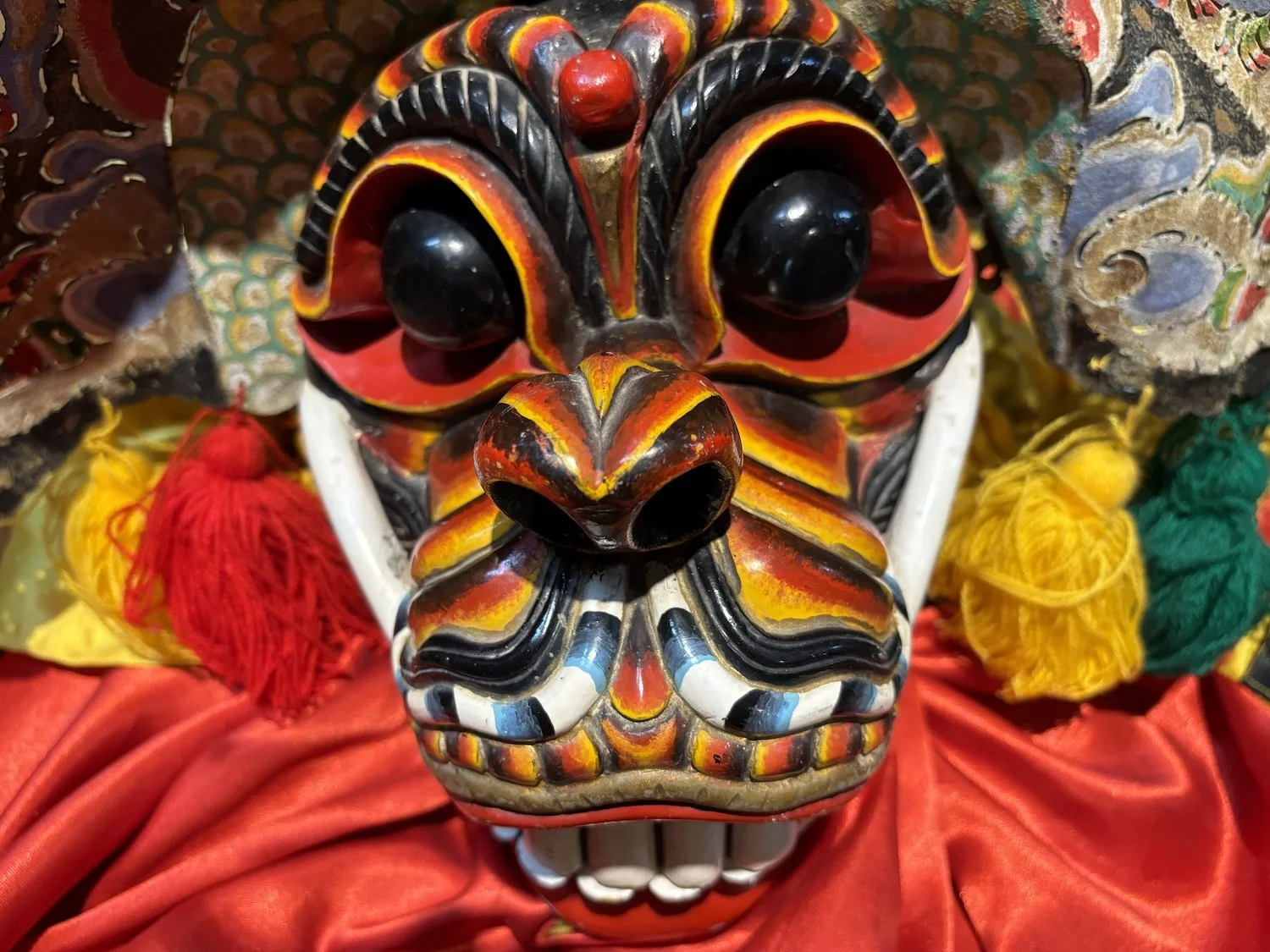
Wayang and Mask Collections
The wayang collection followed the same theme, with treasures from Malaysia, India, Indonesia, and beyond. Thin leather figures painted in gold and crimson stood neatly in rows, each one poised to leap into the spotlight of a shadow play; a vivid example of the Bali cultural attractions that keep traditions alive. Cary leaned over and whispered, “Honestly, these guys could carry their own Netflix series.” I had to laugh, having a funny husband meant the museum came with its own running commentary.
Masks from Indonesia
Another striking piece was a traditional Indonesian dragon costume, brightly colored and segmented, supported by poles so performers could have brought it to life in dances and parades.
Also woven into the displays were the legendary Barong and Rangda costumes, icons of Bali’s dance of good versus evil. The Barong, with its lion like golden mask, represented protection and joy, while Rangda’s fierce features embodied chaos. These costumes were not just displays but sacred symbols that were still used in Balinese rituals.
Bali, Ubud, Things to do in Bali, Indonesia, Cultural Travel, 50+ Travelers,
Joglo Architecture
The centerpiece of the museum buildings was Joglo Boma, an iconic traditional Javanese house. It was a masterpiece that hailed from Demak, every inch soaked in history and bathed in a vibrant yellow paint called pari anom, which in Javanese culture symbolized youth, vitality, and all things fresh and hopeful. Standing in front of it, you could almost hear it cheer, “Indonesia rocks!”
Serene Gardens at Ubud’s Mask and Puppets Museum
Setia Darma House of Mask and Puppets was more than a museum, it was a garden escape where thick greenery surrounded you, statues lurked in corners, and rice fields framed the compound. After the noise of central Ubud, the quiet here felt like Bali at its most genuine, unpolished and alive.




By the time we left it felt less like we had visited a museum and more like the masks and puppets had quietly hosted us. They had whispered their stories as we wandered and reminded us that Bali’s culture was still alive.
Ready to add authentic culture to your Bali itinerary? Put Rumah Topeng dan Wayang Setia Darma at the top of your list for museums in Ubud. Step into a world of masks, puppets, and tranquil gardens, and let this Bali hidden gem surprise and delight you.
PRO TIPS
Avoid Ubud traffic hassles by booking a 10–12 hour private car and driver through Klook. Prices range from (more or less) 600,000 to 800,000 IDR for a smooth, flexible Bali adventure
Wear comfortable shoes, the museum grounds are extensive
Visit in the morning for a cooler experience and quieter ambiance.
For the best weather in Bali, plan your visit between May and September. The dry season offers sunny days, fewer rainy spells, and perfect conditions for exploring museums and gardens in Ubud.
Mask Museum Address and Hours
Ready to add authentic culture to your Bali itinerary? Put Rumah Topeng dan Wayang Setia Darma at the top of your list for museums in Ubud. Step into a world of masks, puppets, and tranquil gardens, and let this Bali hidden gem surprise and delight you.
Setia Darma House of Mask and Puppets
Map to the Museum
Address: Jalan Tegal Bingin, Banjar Tengkulak Tengah, Kemenuh, Sukawati, Gianyar Regency, Bali 80582
Opening Hours: Daily 08:00 - 16:00
Website: https://www.maskandpuppets.com/
More Travel Stories
More travel stories from our travels, along with Bali hotel reviews we loved sharing. Keep scrolling to see our latest posts or use the search box to search Bali topics



